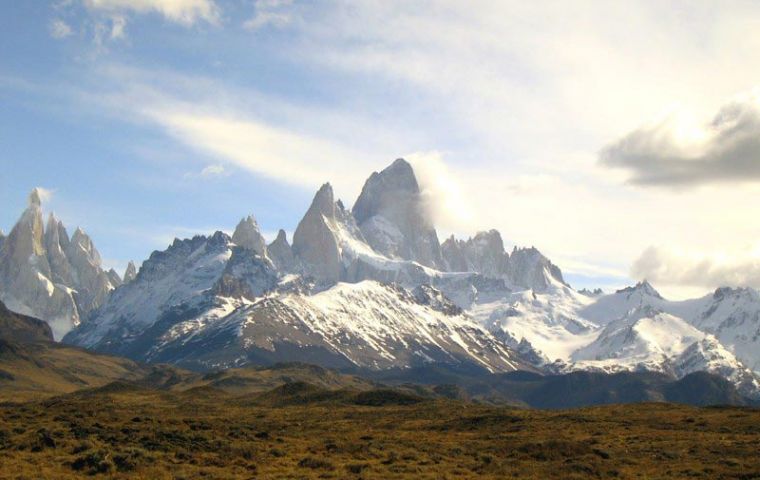MercoPress. South Atlantic News Agency
Released from glaciers Patagonia mountains are growing taller
 Mount Fitzroy could be a metre higher in 30 years
Mount Fitzroy could be a metre higher in 30 years Mountains along the southernmost swath of South America are growing taller at a record rate, say researchers, who attribute the growth to the accelerating loss of glaciers.
The new GPS-based measurements from Patagonia's southern ice field show that between 2003 and 2006 the mountains grew at a rate of 39 millimetres per year. The discovery was reported in the latest issue of the journal “Earth and Planetary Science Letters”.
”Before I saw this article I would have said the highest rate (of mountain growth) was at Glacier Bay, Alaska,“ said Bruce Molnia, a veteran glacier researcher and geologist with the US Geological Survey. In 2005, similar measurements at Glacier Bay found the mountains there rising at a rate of 32 millimetres per year.
Such an exceptional rate of mountain growth is being tied to the powerful tectonic forces building the mountains as well as what's called ”isostatic rebound“ of the crust when the heavy weight of glaciers is removed. In other words, the mountainous crust of the Earth in Patagonia is literally springing up like a hammock that's being relieved of a load.
The cause of all that ice unloading? You guessed it: the warming climate.
”In Patagonia, glaciers are retreating faster now than they have ever retreated formerly,“ said Erik Ivins of NASA's Jet Propulsion Laboratory and a co-author on the Patagonia article.
Ivin's role in the study was to model the rise of those mountains, based on the known ice losses in Patagonia, and make a prediction of how fast the ranges would rise. He predicted they ought to grow by about 30 millimetres per year.
”It was surprisingly higher than we predicted,“ Ivins told Discovery News. What's more, this is no delayed reaction. ”There is an immediate response with ice loss and ground rising -- at the speed of seismic waves.”
The actual measurements of the rising mountains were done by a team of researchers led by Reinhard Dietrich of Institut für Planetare Geodäsie, Technische Universität Dresden, Germany.
Dietrich has alerted mountains climbers to the fact that 30 years from now the most famous peaks of Patagonia, like Mount Fitzroy, will be one meter higher. In other words, mountain climbers will need to take a few more steps to reach the summit. (Discovery News).-




Top Comments
Disclaimer & comment rulesCommenting for this story is now closed.
If you have a Facebook account, become a fan and comment on our Facebook Page!